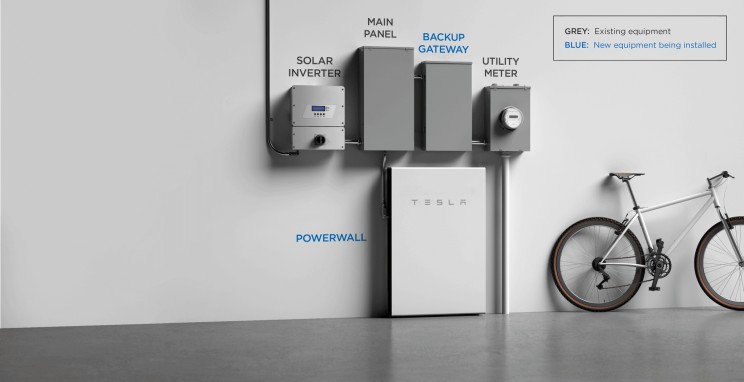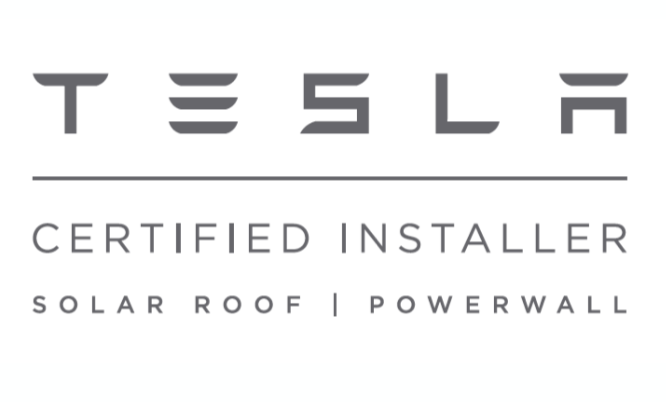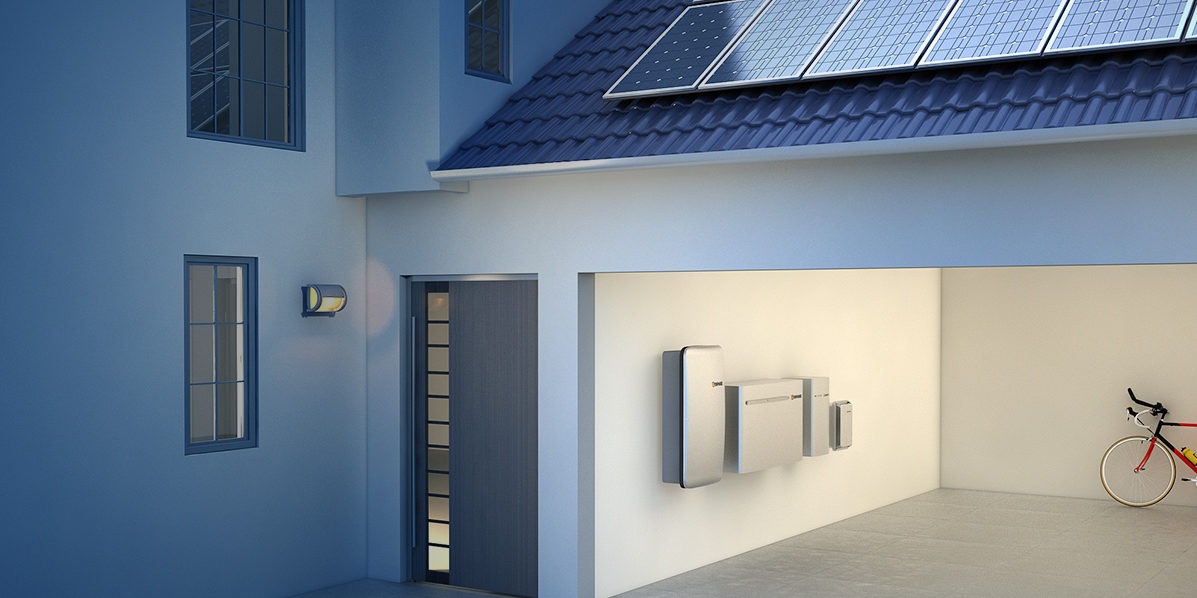
About
Store Your Energy
If you're thinking of going solar, one of your first priorities is solar storage. When you invest in a solar system to energize your home, the goal is to collect and store all the power generated in order to use at another time. Solar batteries can offer both control over your stored power and the opportunity for increased savings, such as powering your home during a blackout and reducing the negative effects of climate change. Add a Tesla Powerwall to maximize the value of your solar panel system and become self-sustainable, produce and manage your own energy.

Battery
Tesla Powerwall 2
The Tesla Powerwall 2 is one of the most advanced residential energy storage systems in the world and it all starts with its battery. The Powerwall 2 is, at its core, a DC Battery system with a usable capacity of 13.5 kilowatt-hours that can be extracted at a 7kW peak or 5kW continuous rate. Since most homes run on AC power, Tesla has stacked an inverter on top of the battery pack that turns stored DC power from the battery into AC power to generate electricity for all your home's appliances and gadgets.


Battery
Sonnen ecoLinx
The Sonnen ecoLinx is an intuitive, connected home energy storage system and can be configured with anywhere from 10 to 20 kilowatt-hours of energy storage per unit, which it stores in 2 kWh modules of batteries. Sonnen ecoLinx has an integrated inverter that was designed to work with the DC feed from a photovoltaic (PV) solar array as well. By pulling the energy generated from a rooftop PV system into ecoLinx, the Sonnen ecoLinx decides whether to store the rooftop PV energy or convert it to AC to power the home.

Battery
Enphase Encharge 3 & 10
The Encharge 10 all-in-one AC-coupled storage system, comprised of three base Encharge 3 storage units, provides a total usable energy capacity of 10.1kWh and twelve embedded grid-forming microinverters. Connect multiple Encharge 10 storage systems to maximize backup potential for whole home backup which provides a power rating of 3.84 kW. These systems can be configured for new and retrofit solar customers.
Request a quote
If you are needing service on an existing system go here. Otherwise please fill out this form and a resprentative will reach out to you

